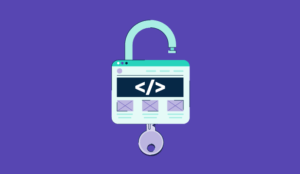The E-Commerce Hosting Checklist: Don’t Launch Without It

Are you ready to launch your e-commerce store in the world? Not so fast – have you set up the right e-commerce hosting to power your online shop yet? Your hosting is the foundation that keeps your store up and running. Without the proper setup, you could face crashes, downtime, and security risks that damage your business.
This checklist will guide you through the essential features you need in an e-commerce hosting plan before opening your virtual doors. From SSL certificates to payment gateways to caching for speed, we’ve got you covered. Follow these steps and you’ll have hosting that scales with your success. Your customers will enjoy a seamless shopping experience and you’ll have the infrastructure to support your growing store. What are you waiting for? Adventure awaits – start building your e-commerce empire today!
Secure Your Site With an SSL Certificate

An SSL certificate is a must for any e-commerce site! This encrypts all data sent between your site and customers, keeping everything secure and private.
Why you need SSL
Without SSL, customers won’t trust your site enough to enter payment info or personal details. SSL establishes an encrypted link and verifies your identity, giving customers peace of mind. It also boosts your search ranking and builds credibility.
How to get SSL
Getting set up is easy! Just purchase an SSL certificate from a trusted provider like DigiCert or GeoTrust. They offer certs for all needs and budgets. Once you’ve got your cert, simply install it on your hosting account. Most hosts make this a breeze through their control panel.
Your e-commerce site is now armed with bank-level security and ready to process payments! Shopping carts, payment gateways, and all customer info will be securely transmitted. Talk about a win-win.
Keep your cert up to date
SSL certificates expire after 1-2 years, so be sure to renew on time to avoid any downtime. Renewing is usually very affordable. Some hosts even offer free SSL to loyal customers, so check with your provider about any renewal deals or incentives.
With SSL in place, you’ve crossed off a huge must-have from your e-commerce checklist. Pat yourself on the back – your online store is well on its way to launching! SSL means happy, paying customers, so take a moment to celebrate this accomplishment. You deserve it!
Integrate Seamless Payment Gateways
To keep your customers shopping, you need payment gateways that make checkout a breeze. The easier and faster it is to pay, the more likely people will complete their purchases!
Secure payment options
Offering multiple secure ways to pay is key. Integrate gateways like PayPal, Stripe, and Authorise.Net to give customers choice. An SSL certificate encrypts data and establishes trust, so get one installed pronto!
Seamless checkout
A quick and simple checkout fuels sales. Use a one-page checkout, pre-fill forms, save payment info, and avoid constantly reloading pages. The faster customers can enter details and confirm, the better!
Mobile-friendly
Make sure your payment gateways are optimized for mobile. Many shoppers now buy on their phones or tablets, so if the experience isn’t good they’ll go elsewhere. Responsive design and auto-fill for mobile payment info are must-haves.
Fraud prevention
Unfortunately, fraud is a risk with online stores. Use fraud detection tools offered by your payment gateways to spot suspicious activity before it becomes an issue. Some gateways also offer chargeback protection in case of disputes, which provides peace of mind.
An efficient, trustworthy way to get paid is essential for any e-commerce business. With the right payment gateway integration, your customers will have a seamless experience and you’ll maximize your sales and success! Choosing highly reputable payment gateways known for security, great UX and lots of options will give your store the strong foundation it needs.
Optimise Speed and Performance for Sales

Your e-commerce site needs to be lightning-fast! Studies show that even small delays in page load times can hurt sales and conversion rates. Shoppers expect a seamless experience, so make performance optimization a top priority.
To speed up your site, choose a hosting plan with plenty of resources like RAM, CPU cores, and SSD storage. SSD storage, in particular, can make a huge difference in load times compared to traditional hard disc drives. A content delivery network or CDN can also help by caching elements of your site around the globe.
Be sure to compress images, minify CSS and JavaScript files, and limit redirects. These techniques reduce file sizes and streamline the number of requests to your server, allowing pages to load faster. You should also enable caching wherever possible. Caching stores certain data in the browser so it doesn’t have to be reloaded on each page view.
Don’t forget mobile optimization! More and more shoppers browse and buy on their phones and tablets. A fast, responsive design is key for the mobile experience. Use a mobile-first approach when building your site. Strip out unnecessary elements, resize images, and consider a separate mobile version of your site.
Monthly uptime and monitoring are must-haves. Even brief periods of downtime can be disastrous for your business. Choose a host that guarantees 99.9% uptime or higher and offers website monitoring to detect issues quickly.
By focusing on speed, performance, and reliability, you’ll give your customers an amazing experience that translates into more traffic, higher conversion rates, and increased sales! An e-commerce site that loads in a flash and works flawlessly will have shoppers coming back time and time again.
Conclusion
Time to wrap up this e-commerce hosting checklist and get your online store launched! You’ve done the hard work by evaluating your specific needs and ensuring you have the essential features in place to support your business. Now it’s gone time. Power up that hosting account, upload your products and get ready to welcome your first customers. Success is within your grasp, you just have to take that first step. What are you waiting for? Your customers are out there ready to discover your brand. Stop procrastinating and start selling! Launch day will be here before you know it. Buckle up for the thrill ride of entrepreneurship and don’t look back. The open road of e-commerce awaits!







